What is a space heater?
A space heater is an individual device usually used to heat a single, small area or space, unlike a central heating system which is used to heat a number of rooms. Portable space heaters can create heat by either burning a fuel such as gas or diesel, or using an electrical supply. Electric space heaters are generally considered to be better and safer as there are no unpleasant fumes, no need for a permanent exhaust, additional fuels, or naked flames, just plug them into a suitable supply and they’re ready to go.
“I’ve heard the term ‘space heater’. What’s the difference between a portable electric heater and a space heater?” Nothing. Portable electric heaters are a type of space heater.
How to calculate your space heater requirements:
The first port of call when choosing a portable space heater for an area is to size the area. The size is chosen in three dimensions, so must include length, width and height. The area being heated must also be enclosed. The calculation for heat requirement is done in cubic metres so you require the length x width x height in metres. If you only have the dimensions in feet, then these will need to be multiplied by 0.3048 each in turn to give dimensions in metres, then those figures must be calculated to get the volume in cubic metres.
Once you have the volume in cubic metres, you need to decide on a temperature rise. Choosing a required temperature doesn’t always give an accurate calculation, as the amount of heat required is based on the insulation value and temperature rise – it will obviously take less heat energy to raise a room from 15 deg C to 20 deg C than it would to raise a rom from freezing (0 deg C) to 10 deg C.
Having chosen a temperature rise, the final part of the calculation is the K value or insulation index. If the room is well insulated, on a similar level to a house, then a K value of 1.2 is correct. If it’s insulated, but less so, like a porta-cabin, caravan, or workshop then 2.2 is the correct K value. For draughty workshops, open warehouses and uninsulated buildings then use 3.0.
If there is no insulation at all, for example a marquee or a building site, then the value 4.0 should be used for K value.
So the full equation is (length x width x height) x temperature rise in deg C x 4 x K Value = BTU/hr required.
The BTU/hr required can be divided by 3412 to give kW/hr.
So for example a 30ft x 60ft marquee with a 4 m high ceiling, requiring to be at 22 deg C when it’s -5 deg C outside:-
30 x 0.3048 = 9.144 ( 30ft in Metres.) x 2 = 18.288 (60ft in Metres.)
9.144 x 18.288 x 4 = 668.90188 (Volume in cubic metres.)
668.90188 x 27 (total deg C temperature rise.) = 18060.35
18060.35 x 4 = 72241.4 x 4.0 (K value for Marquee (uninsulated)) = 288,965.6 BTU/hr
288,965.6 BTU/hr divided by 3412 = 84.690973 kW/hr output.
Please note that although these figures are a very good place to start and an industry standard method used for calculation of heat load, they should be treated as indicative rather than absolute. They are there to give you an idea as to how much heat you might require but due to the amount of variables involved in accurately specifying heat loads for each separate application then we cannot guarantee they will be 100% accurate.
Conversion Table
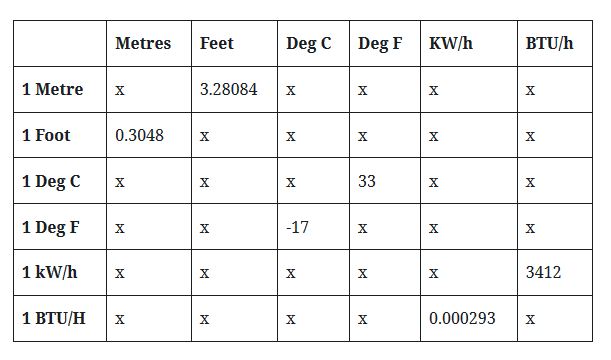
Comparing Fuel Types for Heaters: Why Electric Power Leads the Way
When choosing the right fuel for your heater, you may consider various options such as diesel, gas, coal, wood, and electric. Each fuel type powers heaters in different ways, but when it comes to efficiency, convenience, and environmental impact, electric heaters are undoubtedly the best choice.
Diesel and Gas: Reliable but with Drawbacks
Diesel and gas are traditional fuels used in many heaters, particularly in portable and industrial settings. Diesel fuel provides powerful heat output, making it suitable for large spaces. However, diesel heaters require fuel storage and regular refuelling, which can be inconvenient. Moreover, diesel emits pollutants, contributing to environmental concerns. Gas heaters, using either natural gas or propane, offer quick heating and are often more affordable to run. However, they depend on a constant supply of gas, requiring connection to gas lines or storage of gas cylinders, which can be a logistical challenge, particularly for portable heaters.
Coal and Wood: Traditional Yet Limited
Coal and wood have long been used as fuels for heating, especially in rural areas. Coal heaters, while effective, are becoming less common due to their significant environmental impact, including high levels of carbon emissions and air pollution. Wood-fuelled heaters, particularly wood-burning stoves, provide a cosy, traditional heat. However, they demand a steady supply of wood and regular maintenance, such as chimney cleaning, to ensure safe operation. Additionally, burning wood contributes to indoor air pollution, which can be detrimental to health.
Electric: The Modern and Sustainable Choice
Electric heaters are becoming increasingly favoured for their numerous benefits. They offer an energy-efficient solution, converting almost all the electricity they use into heat without the inefficiencies associated with combustion-based fuels. Electric heaters do not require fuel storage, ventilation, or complicated installations, making them highly convenient and versatile for both portable and fixed applications. Moreover, as the UK transitions towards renewable energy, electric heaters powered by clean electricity represent a more sustainable and future-proof choice. They provide consistent warmth without emitting harmful pollutants, making them the ideal choice for eco-conscious consumers.
In summary, while diesel, gas, coal, and wood have been staple fuels for heaters, electric power offers unmatched efficiency, convenience, and environmental friendliness. Whether you need a portable heater or a permanent installation, electric heaters stand out as the most practical and responsible option.
Why Broughton EAP
At Broughton EAP, we have been in the industrial heating business for over 30 years. We have provided solutions for a host of prestigious big names including end users such as the Bugatti Owners Club and the Ministry of Defence and climate control specialists Andrews Sykes, ICS Cool Energy and Carrier Rental. We’ve designed, manufactured and supplied industrial space heaters to provide warmth everywhere from small industrial units all the way up t huge aircraft hangars, offices to mines and everywhere in-between.Our equipment is built to last, fully serviceable with full spare parts availability and comes backed up with a two year warranty.
Details on our full range of portable HVAC equipment including industrial space heaters can be found at www.broughtoneap.co.uk Should you wish to discuss your requirements or need help in selecting the best possible and most cost-effective system for your specific application then please do not hesitate to contact us on either +44(0)1527 830610 or by sending a message to sales@broughtoneap.co.uk.
Our Industrial Space Heaters:
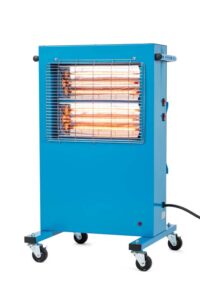 | RG308/32
The fully portable RG308/32 provides localised heat for operatives or processes when traditional heat isn’t an option. Runs from a standard 110V 32A supply and features industry standard halogen bulbs, two heat settings, a reduced glow and a high quality build specification, as well as an anti tilt switch for added safety. | |
 | RG308/16
The fully portable RG308/16 provides localised heat for operatives or processes when traditional heat isn’t an option. Runs from a standard 110V 16A supply and features industry standard halogen bulbs, two heat settings, a reduced glow and a high quality build specification. | |
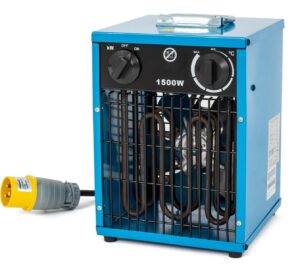 | IFH2 16A 110V INDUSTRIAL FAN HEATER
The lightweight yet durable IFH2 Electric Fan Heater delivers 1.5 kW of heat, and are ideal for areas such as building sites and temporary buildings where only a 16A 110v supply is available. | |
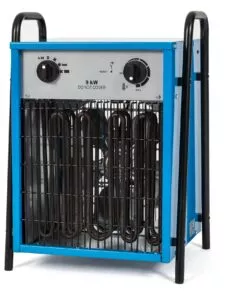 | IFH9 Industrial Electric Fan Heater
The IFH9 offers 3-phase electric fan heating effectively and safely provides up to 9kW of heat output for numerous small & medium sized commercial and industrial premises. A rugged steel casing, with tough enamel finish ensures adequate protection against knocks & bumps. The thermostatically controlled, adjustable heat output makes sure the desired temperature is quickly achieved. | |
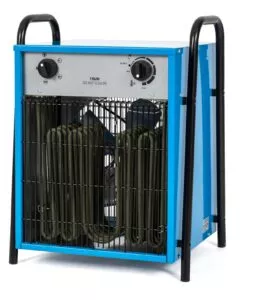 | IFH15 Industrial Electric Fan Heater
The new IFH15 offers 3-phase electric fan heating effectively and safely provides up to 15kW of heat output for numerous small & medium sized commercial and industrial premises. A rugged steel casing, with tough enamel finish ensures adequate protection against knocks & bumps. The thermostatically controlled, adjustable heat output makes sure the desired temperature is quickly achieved. |